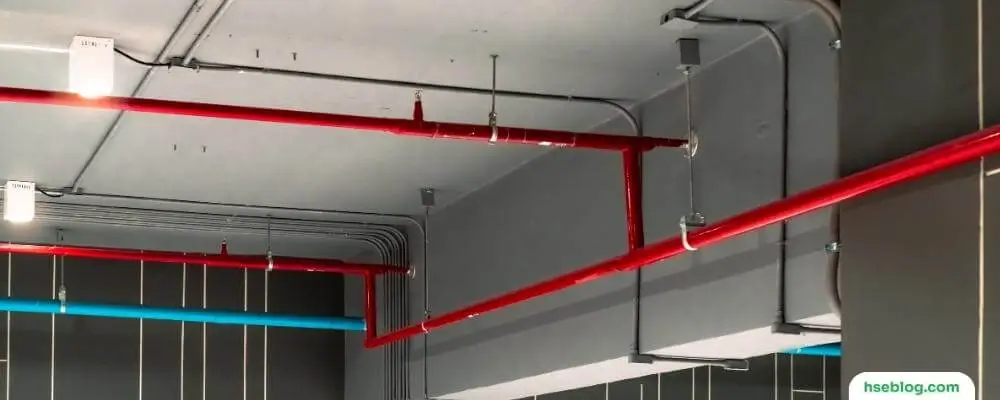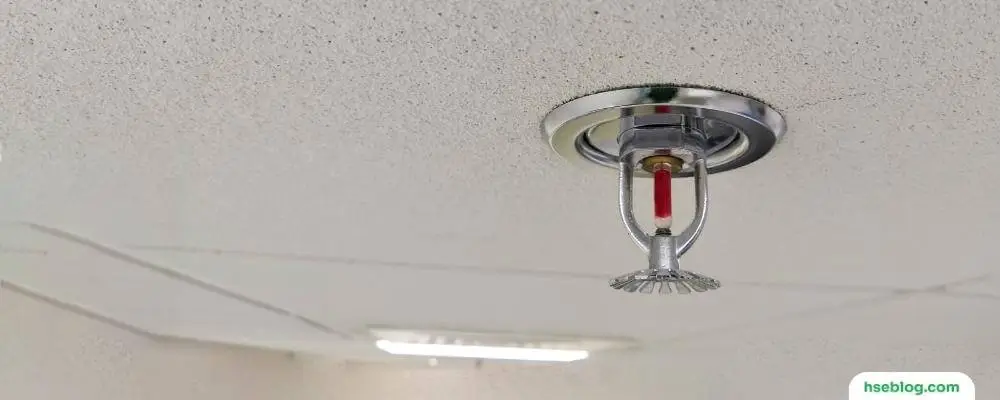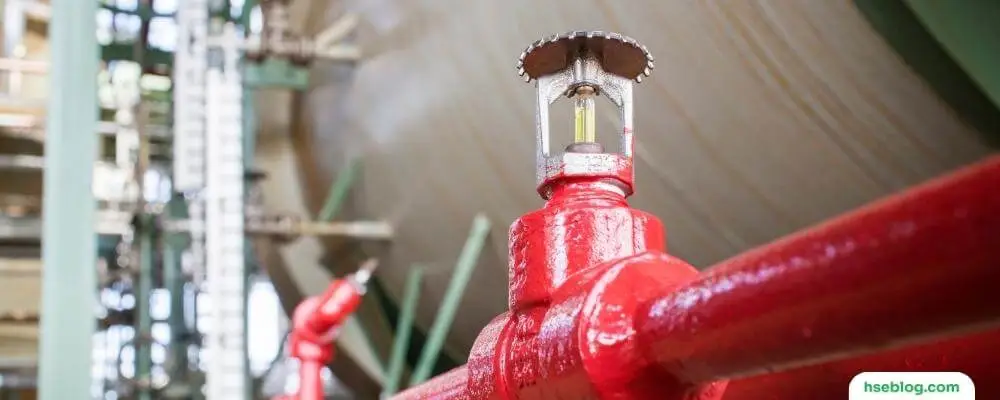The importance of fire safety cannot be understated, whether it’s for a humble residential dwelling or a towering commercial edifice. A vital tool in our fire safety arsenal is the fire sprinkler system. Tracing their origins back to the 19th century, these systems have seen significant advancements, transitioning into formidable fire suppression tools that preserve lives and drastically curtail property damage. Yet, what exactly underpins their operation? What distinct types of fire sprinkler systems are available in the market today?
In this comprehensive blog post, we’ll delve deep into the intricacies of fire sprinkler systems. From unraveling their operational mechanisms to exploring the three primary types leveraged in diverse scenarios, we aim to shed light on the enigmatic world of these life-saving systems.
By gaining a profound understanding of these essential facets, you’ll find yourself equipped with the knowledge of how such systems are indispensable in shielding people and properties against the harrowing impact of fires. This understanding could lead to more informed decisions regarding fire safety measures, potentially saving lives and valuable assets.

What’s Fire Sprinkler Systems?
Fire sprinkler systems are active fire protection measures that consist of a water supply system that provides enough pressure and flow to a water distribution piping system, onto which fire sprinklers are connected. They are designed to extinguish or control a fire in its early stages, thereby reducing the risk of injuries, loss of life, and property damage.
Fire sprinkler systems are important for several reasons:
- Life safety: The most important reason for installing fire sprinkler systems is to protect lives. When a fire breaks out, the heat from the fire causes the sprinkler to activate, releasing water that suppresses the fire and prevents it from spreading. This gives occupants more time to evacuate the building safely.
- Property protection: Fire sprinkler systems not only save lives, but they also protect property. They can significantly reduce the spread and intensity of the fire, thereby minimizing property damage.
- Cost-effectiveness: Despite the upfront costs of installing a fire sprinkler system, they are cost-effective in the long run. The damage caused by a fire in a building without a sprinkler system can be extensive, leading to higher repair costs and potential loss of business operations.
- Quick response: Fire sprinkler systems respond to fires very quickly. It will activate as soon as the system detects heat from a fire. This can often control a fire before the fire department arrives, further reducing damage.
- Environmentally friendly: Fires produce smoke and other harmful substances that can negatively impact the environment. By controlling fires more quickly and efficiently, fire sprinkler systems can help to limit these environmental impacts.
Different types of fire sprinkler systems (wet, dry, preaction) cater to different types of buildings and their specific needs, ensuring optimal fire protection in every context. Regardless of the type of building or its occupancy, a fire sprinkler system is a critical component of any comprehensive fire safety plan.

Types of Fire Sprinkler Systems
Fire sprinkler systems are essential components of fire protection systems in buildings. They are designed to detect and control fires by releasing water or other extinguishing agents in a controlled manner. There are several types of fire sprinkler systems, each with its own specific characteristics and applications. Here are some common types:
- Wet Fire Sprinkler System: These are the most common and simplest types of sprinkler systems. In a wet system, water is continuously maintained within the sprinkler piping. When a fire causes the heat-sensitive element of the sprinkler head to activate, water immediately discharges over the fire area. It’s fast, effective, and works well in most commercial, industrial, and residential applications where there’s no risk of freezing temperatures.
- Dry Fire Sprinkler System: The pipes are filled with pressurized air or nitrogen instead of water in a dry system. When a fire is detected, the air pressure is lost, a valve opens, and water floods the system and is discharged from the activated sprinkler heads. Dry systems are used in unheated buildings, outdoor areas, or other places where water could freeze in the pipes, rendering a wet system ineffective.
- Preaction Fire Sprinkler System: Preaction systems combine wet and dry systems, often used in sensitive environments like libraries, museums, and data centers where inadvertent activation can be damaging. They’re filled with air; water can pass through when smoke or heat detection systems are triggered. Two types of preaction systems are single interlock (activated by the detection system alone) and double interlock (requires activation of both the detection system and the sprinkler heads).
Each system has its specific use cases and is designed to provide the best possible fire protection under different conditions. The choice of which system to install depends on the specific needs of the building and its occupants.

How Fire Sprinkler Systems Work?
Fire sprinkler systems work based on a simple but effective mechanism. Here’s a step-by-step guide on how they work:
1. Detection
The first and most critical step in operating a fire sprinkler system is detection. The primary misconception about these systems is that they are triggered by smoke, but that’s not the case. Fire sprinkler systems are designed to respond to a rapid increase in temperature, indicative of a fire. This heat detection is usually accomplished through a glass bulb within each sprinkler head.
This bulb is filled with a glycerin-based liquid carefully calibrated to respond to specific temperatures, typically between 135-165 degrees Fahrenheit. The selection of this temperature range is strategic. It’s high enough that the system won’t be activated by everyday heat sources (like cooking or a slightly warmer room), but low enough to respond quickly to a real fire.
2. Activation
When the ambient temperature around the sprinkler head rises rapidly due to a fire, the glycerin-based liquid inside the glass bulb expands. This expansion continues until the pressure shatters the glass bulb, triggering the sprinkler head. It’s worth noting that some systems might use a heat-sensitive metal alloy, known as a fusible link, instead of a glass bulb. This metal alloy is designed to melt when subjected to high temperatures, also leading to the activation of the sprinkler head.
3. Release of Water
The next step involves the release of water. Each sprinkler head in the system is essentially a valve kept closed by the glass bulb or fusible link. When the heat from a fire causes the bulb to shatter or the alloy to melt, the valve is opened. This opening allows the water held under pressure in the piping system to flow freely from the sprinkler head.
4. Water Discharge
How the water is discharged from the sprinkler head is specifically engineered to fight fires effectively. Instead of simply pouring down, the water is sprayed out in a specific pattern designed to cover as much area as possible and thoroughly soak the immediate vicinity. The force of the water’s discharge is propelled by the pressurization within the system, which ensures the water can reach far enough to suppress the fire and prevent it from spreading.

5. Individual Response
One of the most intelligent aspects of a fire sprinkler system is its individual response capability. Each sprinkler head operates independently of the others. Only the sprinkler heads will activate near the high heat (and therefore the fire). This feature helps confine water damage to the area directly affected by the fire rather than soaking the entire property. Should the fire grow and spread, nearby sprinkler heads will detect and activate the increasing heat as necessary. This targeted response provides an efficient and effective fire suppression approach, minimizing fire and water damage.
In summary, fire sprinkler systems employ a methodical and scientifically designed approach to detect, respond to, and suppress fires, proving themselves as crucial installations for fire safety in various properties.
Also Read: ICP AnalysisConclusion
In conclusion, fire sprinkler systems play a crucial role in safeguarding both lives and property from the catastrophic consequences of fires. By understanding their inner workings and the different types available, we are better equipped to select the most suitable system for our unique circumstances. Whether the common wet system for quick response, the dry system for environments prone to freezing, or the complex preaction system for high-value premises, the right fire sprinkler system can make a critical difference when disaster strikes.
As technology advances, we can look forward to even more efficient and effective fire sprinkler systems, enhancing our fire safety measures and making our homes and workplaces even safer.

